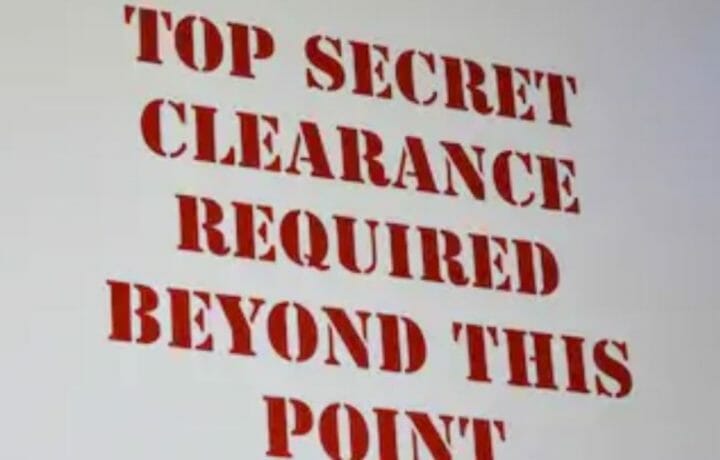The National Archives has released the 2011 report by the Information Security Oversight Office (ISOO). The ISOO is charged by presidential directive to oversee and analyze the various document classification and declassification processes within the U.S. government. The report lays out the progress or lack of progress in the government’s attempts to control the amount of classified documents it produces and retains.
There are 2,362 original classification authorities, positions within the Executive Branch that have the authority to classify documents. This authority derives from a presidential order establishing which positions determine document classification and which can delegate that authority. In 2011, original classification authorities made 127,072 such decisions.
There is a second group of positions with limited authority to classify documents. Derivative classification decisions make up the vast majority of classification activities, 92,064,862 derivative decisions in 2011. That was a twenty percent increase over 2010.
An expert, speaking on background, noted that there were 4.2 million derivative classifiers in federal service. This number includes military, civilian and contract employees. Every one of these people has undergone a security clearance to the level required for their position.
In theory, the people in these positions classify documents they produce based on the highest classification of any of their source documents. Each Federal agency has its own set of guidelines, stating the subject areas that should be classified. Derivative classifiers should follow their agency guide and the classification of their source materials.
Only 28 percent of all 2011 derivative classifications were top secret. 56 percent were classified secret and sixteen percent were classified confidential. The growth in classification decisions has grown from 22.2 million in 2009 to the 92 million decisions in 2011. According to a New York Times article from November, 2011, estimates are that 50 to 90 percent of all classified documents could be made public.
The Brennan Center’s Liberty and National Security (LNS) Program is one of the many advocates of reducing the production and retention of classified materials. Elizabeth Goitein is the co-director of the LNS Program. In the fall of 2011, she authored a policy paper with David Shapiro entitled Reducing Overclassification Through Accountability.
The paper concludes that the current classification system contains few incentives to not classify a document. Agency culture, poor training of derivative classifiers in the scope of their authority and an all too human need to aggrandize one’s accomplishments contribute to the over classification problem. It is safer from nearly any perspective for a derivative classifier to classify a document rather than leave it openly available to the public.
Goitein and Shapiro offer a number of suggestions. Most revolve around increasing oversight or review of classifications. One suggestion would require someone classifying a document to offer reasons for that action. An explanation for a classification decision would spell out the guide area that the document falls in to and the risk to national security if the document is not classified.
The number of derivative classifiers, those with varying levels of security clearance, need not shrink. The number of documents that they classify must shrink, though, in an era of open government and in the service of reducing the costs of government.
Charles Simmins brings thirty years of accounting and management experience to his coverage of the news. An upstate New Yorker, he is a free lance journalist, former volunteer firefighter and EMT, and is owned by a wife and four cats.




